Optical Networks
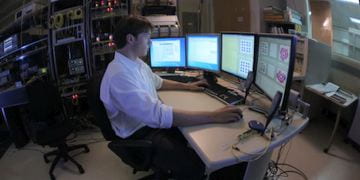
Investigation of optical technologies with emphasis on advanced communication techniques for high-speed links and the interface with high-speed electronics.
Areas of research include: coherent detection and electronic signal processing, autonomous systems, multimode VCSEL based fiber links for data centers, system simulation tools, microwave photonics & radio over fiber.
Faculty
Stephen Ralph
- 100G and Terabit systems
- Software-defined autonomous networks
- Digital coherent receivers
- Electronic signal processing
- System simulations and scaling
- 100G wireless
- Multimode VCSEL systems
- Modulation and detection algorithms
- Microwave photonics
Matthieu Bloch
- Communication theory
- Signal processing
- FEC
- Modulation and coding
- Physical-layer security
G. K. Chang
- Optical networks
- Radio over fiber
- Access networks
- Coherent systems
Wireless Communications
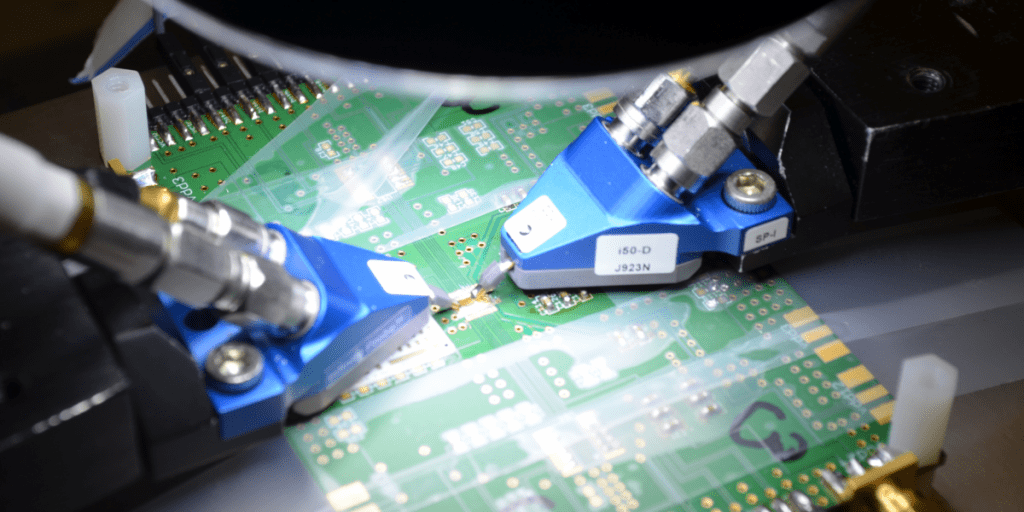
Investigation of wireless technologies with emphasis on ultrafast devices, antennas, circuits, and integrated modules for high-speed communication links and conformal radar/sensing applications up to THz frequency range.
Areas of research include: Si/SiGe-based technologies, devices and circuits for mixed-signal applications, W band circuits, tunable materials and filters, millimeter-wave antennas and circuits for WPAN, WBAN and WSN’s, and inkjet-printed RF electronics & wireless sensing nodes.
Faculty
John Cressler
- Strained-engineered, silicon-based nanotransistors
- SiGe heterostructure technology (SiGe HBT, strained Si CMOS)
- Devices, circuits, systems for mixed-signal apps
- Radar systems, wideband transceivers, 100G ethernet
- Extreme environments (wide T, radiation), self-healing circuits
Manos Tentzeris
- Conformal 25dbi+ antennas and antenna arrays up to 94 GHz
- RF/Wireless 3D integration & packaging (org/cer)
- RFID’s
- Inkjet-printed RF
- Rugged/liquid WSN’s
- Power scavenging
- Wireless power transfer
- “Green” RF on paper
- Nanoenabled RF structures
Hua Wang
- RF/mm-Wave/sub-THz circuit & system designs
- Self-healing & reconfigurable circuits & systems
- Broadband low-loss matching techniques
- Broadband multi-mode energy-efficient PA designs
- On-chip antenna designs
- Silicon-based power generation & amplification techniques
- Fundamental noise modeling in circuits & systems
Steve Kenney
- High power RF amp design
- PA linearization (digital & analog)
- RFIC design (PAs, VCOs,)
- Tunable materials (multiferroics)
- Phased arrays/smart antennas
Nima Ghalichechian
- mmWave (30-300 GHz) antennas and arrays
- 5G/6G antenna systems
- Reconfigurable antennas and components
- On-chip antennas and arrays
- Reflectarrays and phased arrays
- Phase-change materials for RF sensors
- mmWave antenna measurements
Radar & Sensor Systems
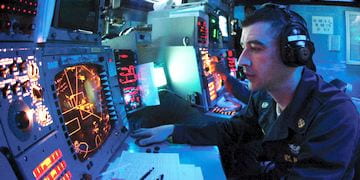
Investigation of novel radar and sensor integrated circuits with improved form factor, efficiency, output power, sensitivity, and functionality, from RF to sub-mm-wave frequencies.
Areas of research include: Si/SiGe-based radar T/R modules from RF to THz, digital control, data converters for direct to RF, true-time-delay approaches, optimization for efficiency, reconfigurability, novel phased array implementations, novel packaging approaches, satellite-based remote sensing systems, automotive radar.
Faculty
Hua Wang
- RF to THz circuits and systems
- Self-healing and reconfigurable circuits and systems
- On-chip antennas and antenna arrays
- High-frequency circuits and antenna co-designs
Alenka Zajic
- On-chip and off-chip interconnects
- Mobile-to-mobile wireless channel modeling and measurements
- Underwater wireless channel modeling and measurements
- Electromagnetic security and compatibility
- Applied electromagnetics
Steve Kenney
- High power RF amp design
- PA linearization (digital & analog)
- RFIC design (PAs, VCOs, etc.)
- Tunable materials (multiferroics)
- Phased arrays/smart antennas
John Cressler
- Strained-engineered, silicon-based nano-transistors
- SiGe heterostructure technology (SiGe HBT, strained Si CMOS)
- Devices, circuits, sys. for mixed-signal apps
- Extreme environments (wide T, radiation), self-healing circuits
Brent Wagner
- T/R module technology
- GaN amplifiers
- High power packaging
- Assembly
- Thermal Management
Cognitive/Software Defined Radio
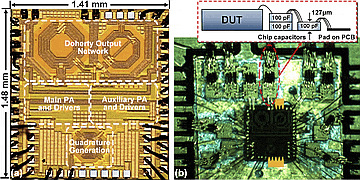
Enabling agile radios through tunable and adaptive circuits, efficient processing algorithms and hardware, and smart RF chains.
Areas include: radio collocations, wireless security, MIMO wireless systems, reconfigurable/self-healing wireless system, gigabit optical networks, and gigabit backplane & linecards systems for next-generation consumer products, data centers, radars, and coherent detection systems.
Faculty
Farrokh Ayazi
- High Q MEMS resonators
- Integrated MEMS filter arrays
- Reconfigurable filters
- MEMS-based reference oscillators
- Tunable oscillators with wide range
- Integrated MEMS passives and mixers
David V. Anderson
- Efficient hardware for MIMO
equalization and detection - Asynchronous signal processing datapaths
for efficient communications and DSP systems - Probablistic hardware
Hua Wang
- Broadband energy-efficient
circuits and systems - Self-healing and reconfigurable
circuits and systems - Broadband multi-mode energy-efficient
PA designs in silicon
Wide-Bandgap GaN Technologies
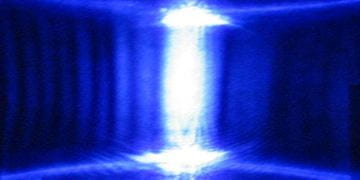
Engaging advanced epitaxial material growth technologies to enable III-Nitride (III-N) semiconductors for next-generation optoelectronics and microelectronics applications.
Leveraging high-quality III-N epitaxial materials to exploit new devices and ICs for a wide variety of green technologies.
Areas include: visible and UV LEDs, visible and UV LDs, RF/mm-wave transistor technologies, power electronics for smart grids, high-performance HBTs, and avalanche photodiodes.
Faculty
Russell D. Dupuis
- LEDs (visible, UV)
- Laser diodes (green to violet, UV)
- III-N transistors (HEMTs, HBTs)
- III-N UV avalanche photodiodes
- High-voltage power switching devices
S. C. Shen
- III-N HEMTs & HBTs (high-voltage, RF)
- Power electronics for smart grid (device design/modeling,
fabrication technology, IC integration, manufacturability) - III-N optoelectronic device fabrication
techniques and characterizations
Biomedical Systems

Investigation of novel uses of electronics and photonics to enable new approaches in medicine and medical therapies. Areas of research include: efficient signal processing approaches, implantable devices, biosensors, the brain-computer interface, ultra-low-power electronics, RF-THz sensors, neuroprosthetic devices.
Faculty
David Anderson
- Advanced bio-signal processing
- Hearing aids
- Efficient signal processing architectures
Farrokh Ayazi
- Biochemical Sensors
- Interface ICs for biosensors
- 6 DOF motion sensors
- Magnetic sensors
Maysam Ghovanloo
- Implantable biomedical electronics
- Neuroprosthetic devices
- High-efficiency power and data transfer
- Assistive technologies
- Brain-computer interfacing
- Energy harvesting
- Novel medical devices
Jennifer Hasler
- Bio-inspired circuits and systems
- Ultra-low power ASICs
- Reconfigurable/tunable electronics
- Analog signal processing
- Floating gate transistor technology
- Neuromorphic circuits and systems
Manos Tentzeris
- Wearable and implantable antennas
- Inkjet-printed antenna technology
- Autonomous self-recharging biomonitoring systems on paper
Hua Wang
- Integrated sensors and actuators
- Integrated circuits and microfluidics co-design
- Circuit and system for RF/mm-Wave/sub-THz imaging applications
- Fundamental noise modeling for integrated sensor circuits and systems
- Modeling electrochemical Properties of biosamples
